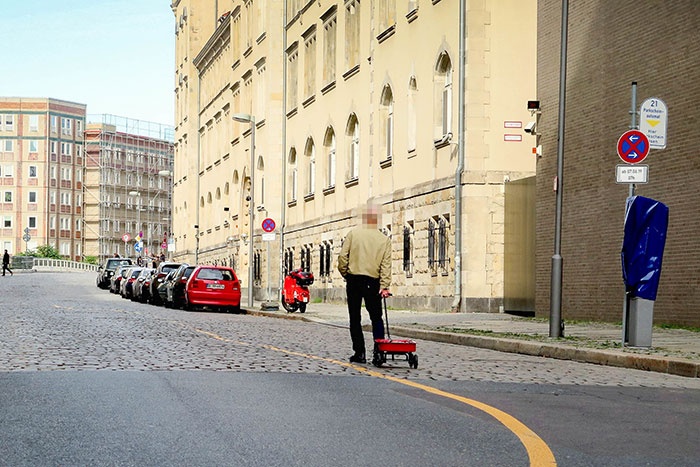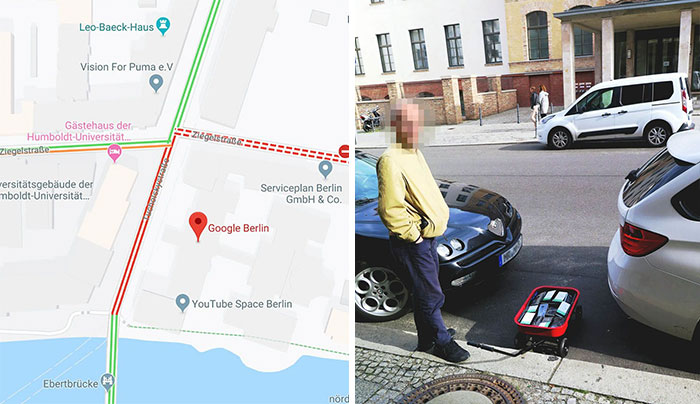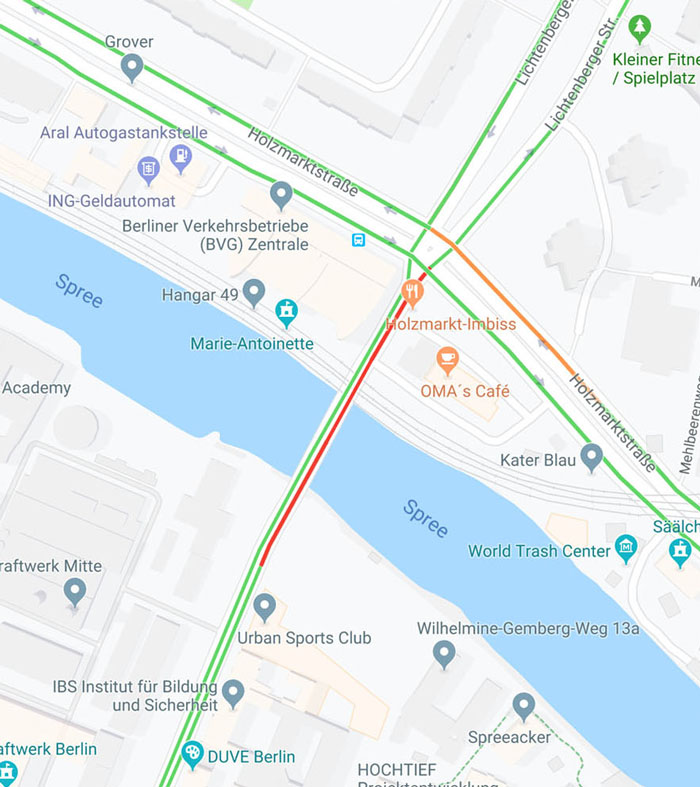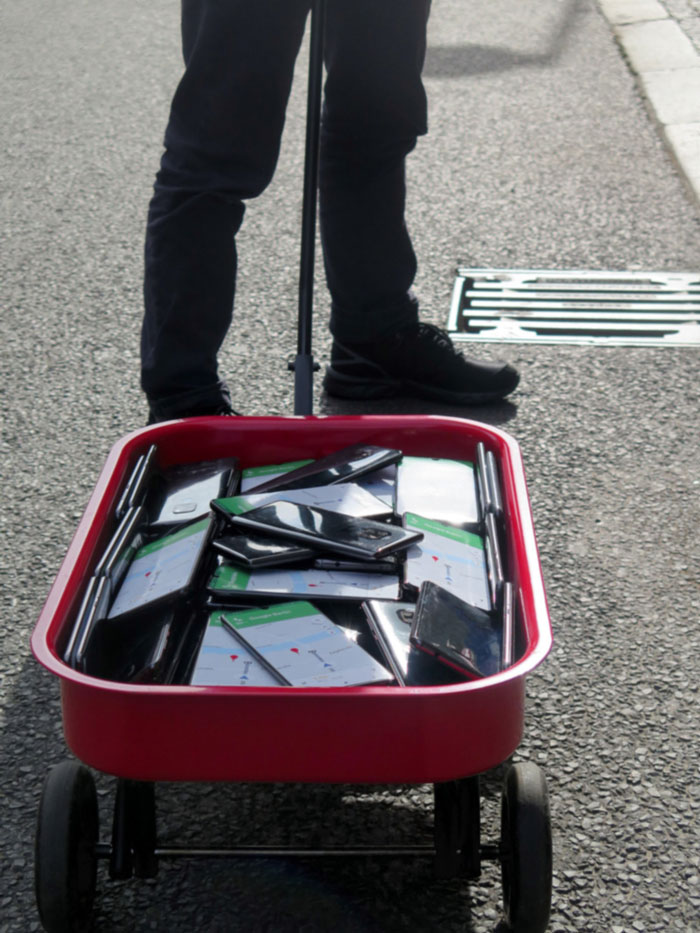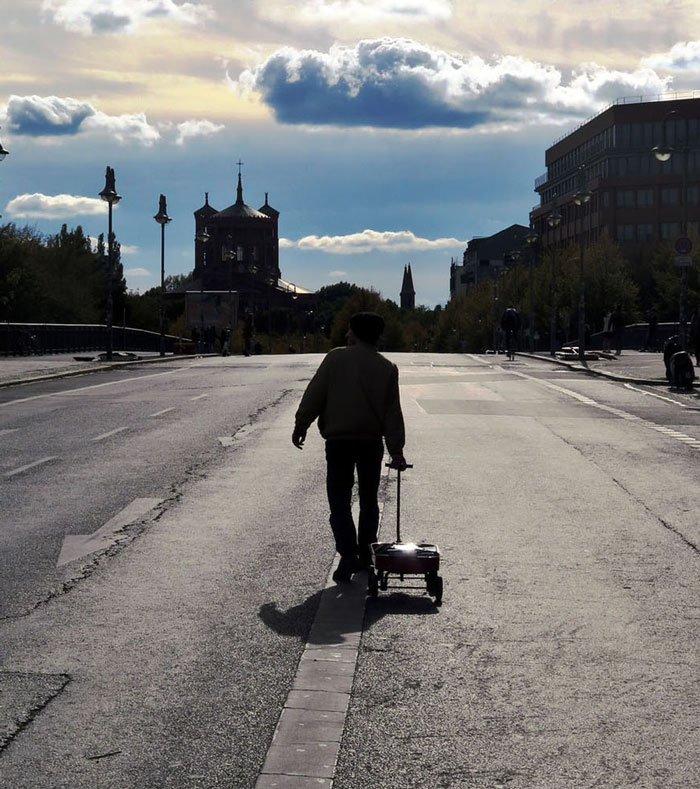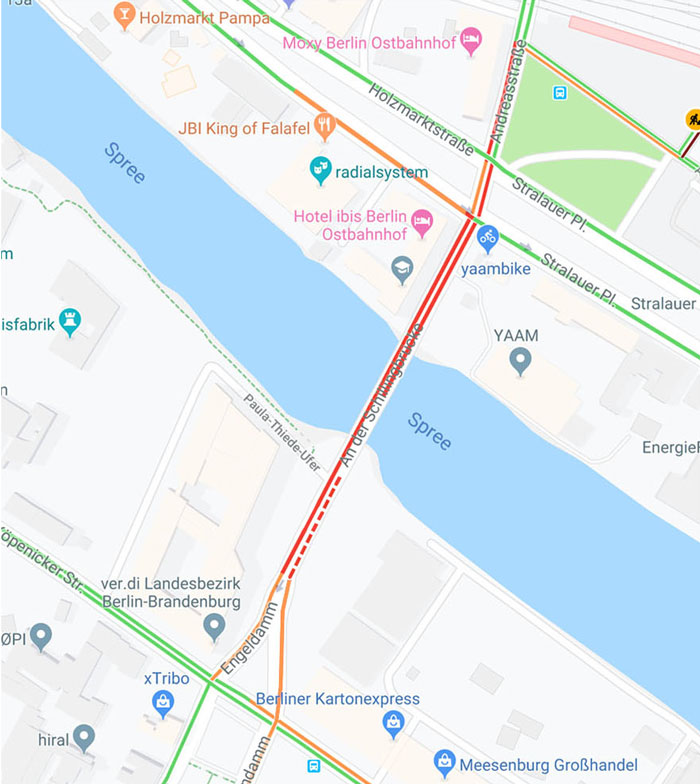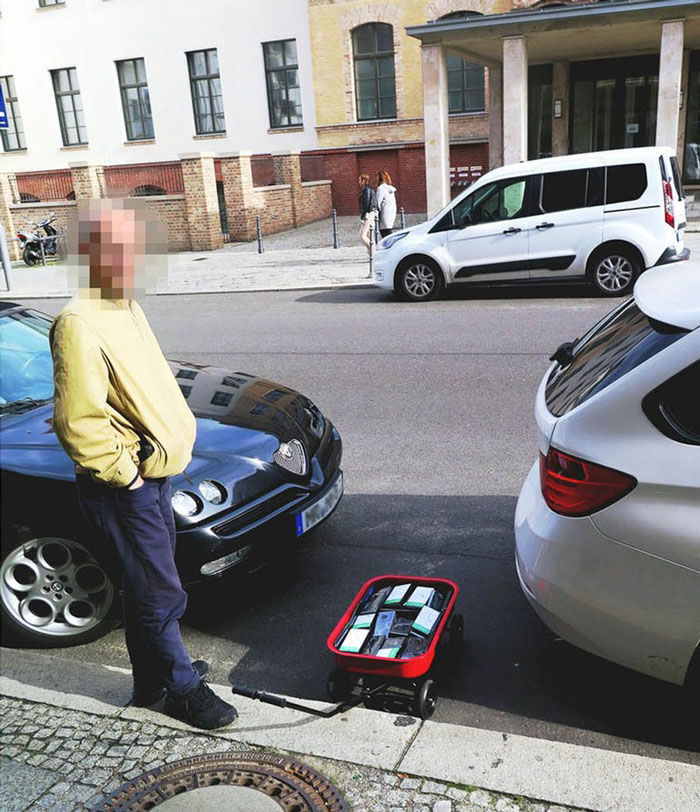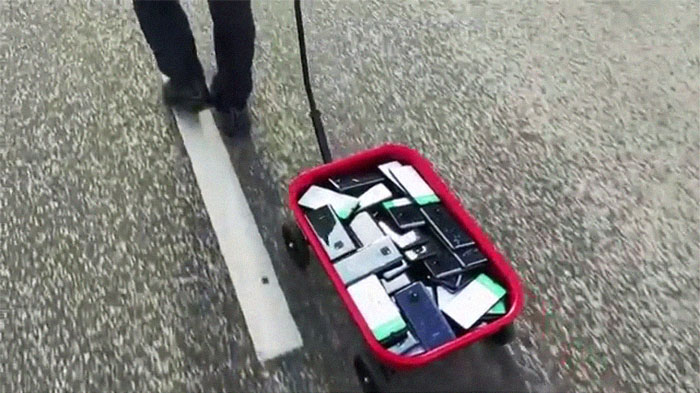An unusual thing happened in Berlin when google maps started showing a red line on various streets.
Those streets were calm as in routine heavy traffic does not pass from there and even there was no event going on which could have blocked the traffic nor was any other unusual thing.
But you will be amazed t know as who was seen on those blocked roads: A man who was pulling a red wagon and he was walking all around the streets of Berlin.
Simon Weckert, who is an artist in Berlin rented 99 Android smartphones, mounted 99 sim cards and filled a car, which was a red wagon, all the smart phones were switched on and Google Maps were opened on them. He then took them with him to Berlin streets at a time when traffic was sparse.
The purpose of the experiment, which he conducted last summer but which was just published yesterday on the 15th anniversary of Google Maps, was to show how much we rely on the traffic technology apps despite knowing the fact that it has so many limitations.
We all have questions about the working of google maps and we hope that Simon has answered them all.
A Google spokesperson informed that the traffic is estimated by the app by approaching the number of phones which have enabled their location and in order to look for the location.
The only interpretation for Weckert’s 99 phones in a compacted space, was a dense traffic jam.
The Weckert’s experiment also helped Google to locate as to where its geolocation requires an improvement moreover it will also be helpful in distinguishing automobiles whether it is a car or a motorcycle but still it will be hard to recognize a wagon, as told by the Google spokesperson.
You might be wondering as to why a bus full of passengers with smartphones doesn’t show a bumper to bumper traffic jam.
However, it is very easy to recognize a bus via geolocation.
Maybe Weckert’s next experiment should be trying to fool Google Maps into thinking he’s a bus.
Perhaps he should try to deceive google maps by showing them as he is a bus.
Weckert wanted to show how we depend on data to predict reality for us so that we can organize our actions around it, believing it as an unbiased view of truth, even if the technologies used to interpret data can be deceptive or incorrect, possibly creating an unreliable model.
Recommended video!
“Entitled Woman Who Steals Handicap Parking Spot Is Taught A Swift Lesson”
[rumble video_id=vfr4u domain_id=u7nb2]


